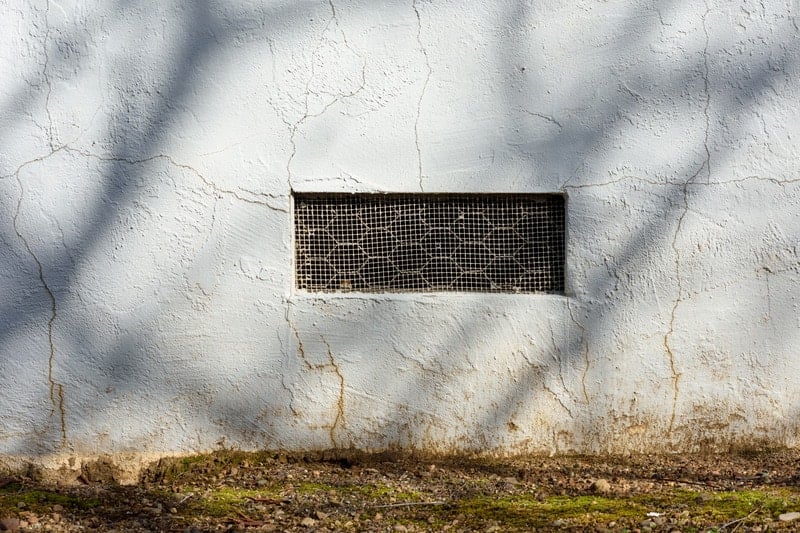When temperatures drop, one of the most common questions homeowners ask is whether their crawl space vents should stay open or closed during winter. These vents are meant to protect your home, but in cold weather, they can sometimes cause more problems than they solve. Closing or leaving them open can affect your comfort, your energy bills, and even your home’s structure. Let’s take a closer look at how crawl space vents work, how they respond to winter conditions, and what you can do to get the best results.
What Are Crawl Space Vents?
Crawl space vents are small openings built into the foundation walls of homes with crawl spaces. Their original purpose was to let outside air circulate through the crawl space, which helps reduce moisture buildup. Some building codes required them because it was believed that ventilation alone would prevent mold and mildew.
However, not every home benefits from having vents, and in certain climates, they can do more harm than good. Today, most experts, including our team at CNT Foundations, recommend crawl space encapsulation rather than relying on open vents to control moisture. Encapsulation provides a sealed, insulated, and conditioned space that offers better year-round protection.
How Does Winter Affect Crawl Space Vents?
Winter brings colder temperatures and an increased chance of drafts sneaking into your home. When the vents remain open, frigid air enters your crawl space and lowers the temperature under your floors. This not only makes your home feel colder but also forces your heating system to work harder. In some cases, that cold air can reach plumbing pipes and put them at risk of freezing. Additionally, the combination of cold outside air and warmer inside air often leads to condensation, creating new moisture problems.
Why Should You Close Your Crawl Space Vents in Winter?
If your crawl space is not encapsulated, closing the vents in winter is the next best thing. Doing so helps protect your home in several ways. By sealing them off, you prevent cold air from rushing in, which keeps the area below your house more stable. That extra protection leads to better comfort, safer conditions for your plumbing, and even lower heating bills.
Maintains Temperature in Crawl Space
When vents are open in the winter, cold air slips directly into the crawl space. This cools down the floors above the crawl space, making your home feel drafty even if the heat is on. Closing the vents helps keep temperatures more consistent, which means warmer floors and fewer uncomfortable cold spots throughout your home. You will notice the difference, especially during those extra chilly mornings. In homes with insulated subfloors, which is often required by local codes, closing the vents helps that insulation work more effectively by preventing freezing air from circulating underneath it.
Improves Energy Efficiency
Your heating system already works hard in the winter. Open vents put more strain on it by letting in freezing air that lowers the temperature beneath your home. When you close the vents, your furnace or heat pump won’t have to run as often to keep the house comfortable. Over time, this can lead to noticeable savings on your energy bills while also reducing wear and tear on your system.
Protects Pipes from Freezing
Pipes running through your crawl space are especially vulnerable when outside air is able to pour in through vents. A sudden freeze can cause water inside the pipes to expand, leading to cracks or bursts that cost thousands of dollars to repair. Sealing your vents in winter keeps the crawl space warmer and helps protect those pipes from extreme temperature swings. This simple step could save you from dealing with a major plumbing disaster.
Reduce Moisture Problems
Cold air mixing with warmer air in your crawl space often creates condensation. Over time, this extra moisture can encourage mold growth, wood rot, and even attract pests. Closing the vents limits that air exchange, which helps keep humidity levels lower during the winter months. A drier crawl space not only protects your home’s structure but also makes your living environment healthier. However, keep in mind that moisture can still enter through the soil or small cracks. This is one reason why full crawl space encapsulation, complete with vapor barriers and dehumidification, is the most reliable long-term solution.
Keep Pests Out
Mice, rats, and other pests often use open vents as entry points when they are searching for warmth during the winter. Once inside, they can chew on wires, damage insulation, and leave behind waste. By closing your vents, you remove one of the easiest access points for these unwanted visitors. This keeps your crawl space cleaner and your home safer from infestations.
Improves Indoor Air Quality
Air from your crawl space often rises into your home in what is called the stack effect. If that space is damp, cold, or filled with mold spores, those particles can end up inside the air you breathe. Closing your vents helps you maintain a cleaner and drier environment under your house, which leads to better indoor air quality. You and your family will benefit from fewer allergens and a healthier living space. With encapsulation, the air quality benefits are even greater since it creates a conditioned environment that’s sealed off from outdoor air and moisture.
Risks of Not Closing Crawl Space Vents in Winter
Leaving your crawl space vents open in winter exposes your home to several risks. Cold air rushing in can freeze pipes, which may burst and flood the area. Your floors can become noticeably colder, leading to higher heating costs as your system struggles to keep up. Moisture condensation can increase, creating the perfect environment for mold and wood rot. In addition, pests may find it easier to enter through open vents when they are seeking shelter from freezing conditions. These risks add up to costly repairs and avoidable stress.
Best Practices for Closing Crawl Space Vents in Winter
When you are sealing your vents for the winter, you have a few choices. Some homeowners use covers that can be placed on and off seasonally, while others choose permanent covers combined with full crawl space encapsulation. Whatever option you pick, the goal is to protect your crawl space while making your home more comfortable. At CNT Foundations, we generally recommend encapsulation for the best results. But if encapsulation is not an option right now, closing the vents during winter and ensuring your subfloor insulation is in good shape will still make a big difference.
Controlling Crawl Space Humidity
Humidity in your crawl space can be just as damaging as cold air. Even with the vents closed, moisture can seep in through soil or small cracks. Using a vapor barrier across the ground, improving drainage around your home, and adding a dehumidifier are smart ways to manage humidity.
Keeping moisture in check makes sure your crawl space remains dry and your home healthier year-round. CNT Foundations typically replaces old or damaged insulation with new fiberglass insulation when necessary, as fiberglass performs well for subfloors and complies with local codes. However, we avoid wall insulation in crawl spaces because termites tend to nest behind it in this region.
Summary
If you have ever wondered whether to close your crawl space vents in winter, the answer is clear: doing so keeps your home warmer, more efficient, and better protected. However, the best long-term solution is full crawl space encapsulation, which seals off vents permanently and adds vapor barriers for maximum protection. By sealing the vents, you help maintain steady temperatures, lower heating bills, and shield your pipes from freezing. You also reduce moisture issues and improve air quality.
As homeowners, we all want a comfortable and secure home, and taking this simple step gives you a practical way to achieve it. If you are not sure whether encapsulation or simple vent sealing is right for your home, CNT Foundations can help you determine the best solution based on the condition of your crawl space and local code requirements. Contact us today for a free estimate.


